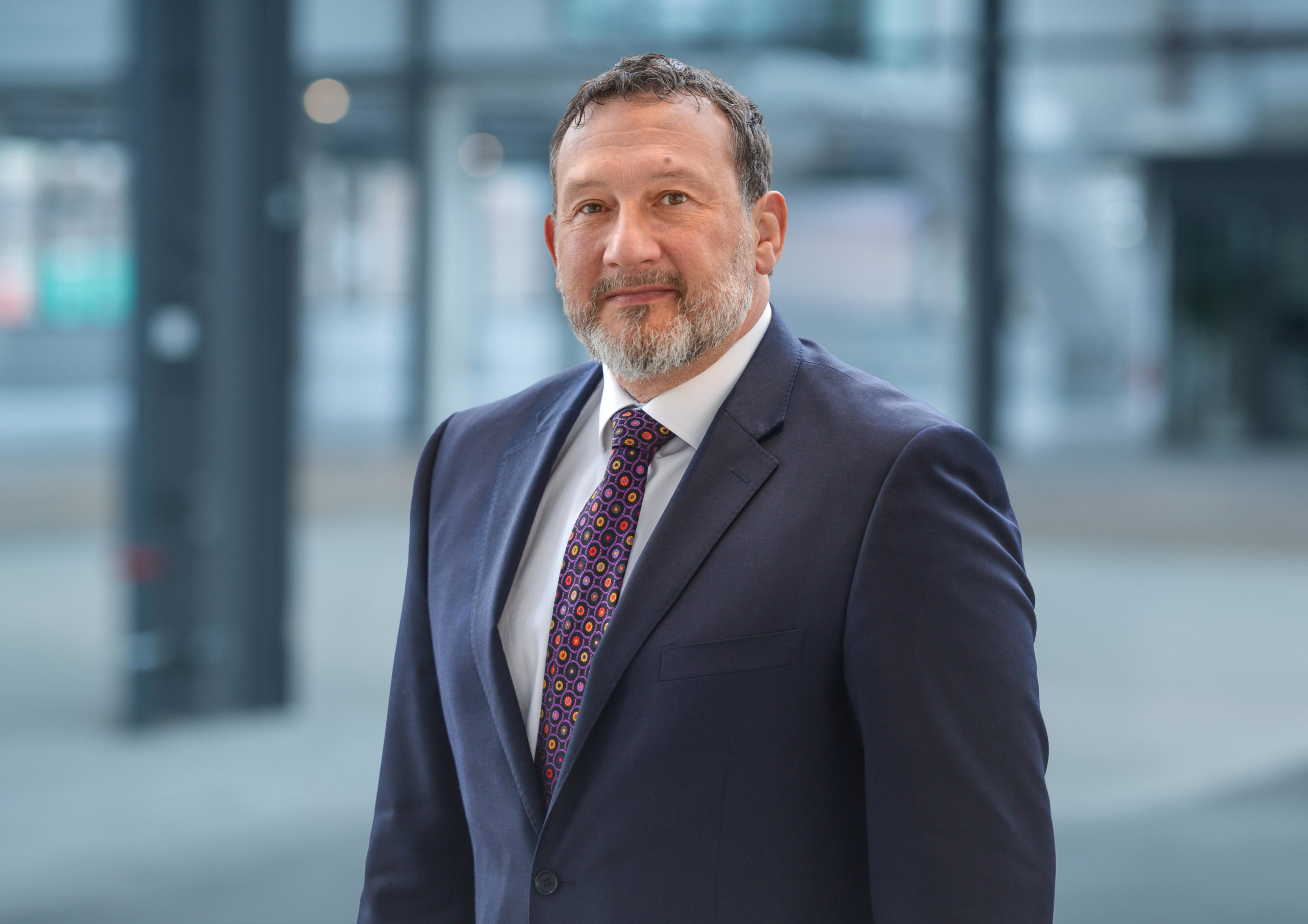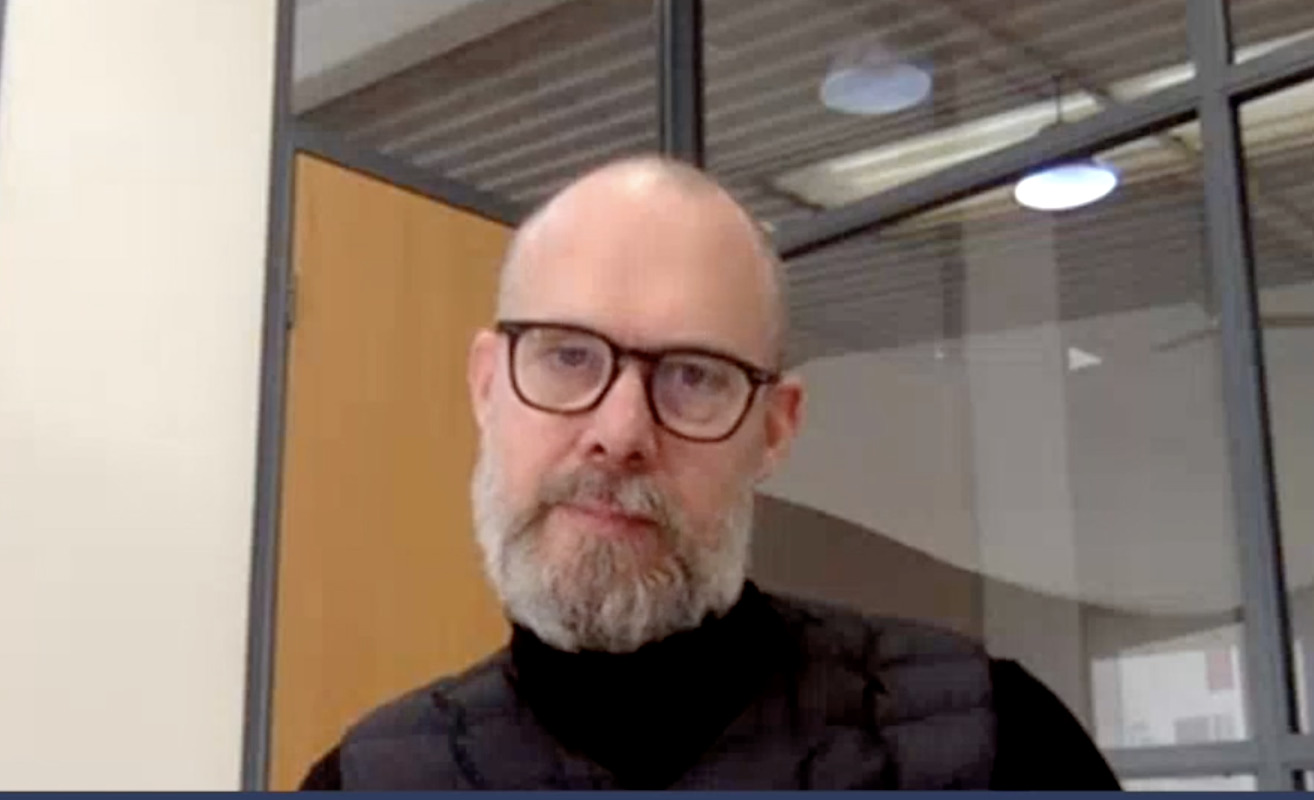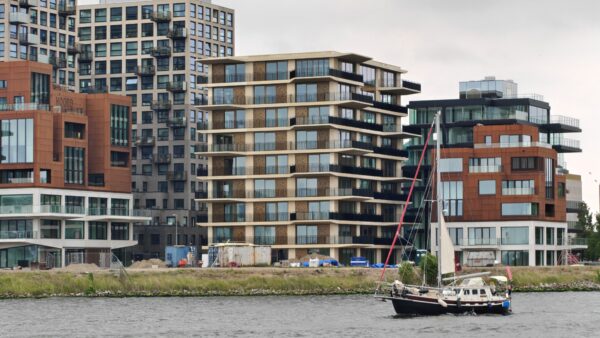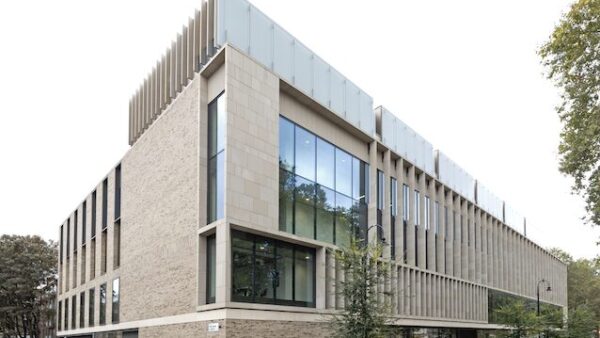Complete the form below to access this content.
What will the next 10 years hold for the architectural ironmongery industry? What are the challenges it is facing and how equipped is it to tackle them? Where do the opportunities lie and how can it attract the next generation? Here, four of the sector’s thought leaders discuss the biggest issues from digitalisation and the golden thread, to skill sets, sustainability, product integrity, professional competence and the return of the architect’s power.


Paul Martin 
Richard Waterhouse 
Steve Bewick 
Hannah Mansell
THE SPEAKERS
Hannah Mansell, UK group technical director Masonite UK
Paul Martin, UK managing director of dline
Richard Waterhouse, a consultant and former chief strategy officer at NBS. He is an architect and BIM specialist.
Steve Bewick, chief operating officer for access control EMEA dormakaba
The session was chaired by Liz Male, director of PR and communications consultancy LMC.
WHAT ARE THE KEY ISSUES?
“The next 10 years will probably be one of the most exciting,
yet chaotic landscapes that we have seen in the door
and ironmongery world”
HM: The main points I want to make in this debate are going to be around fire doors. Essentially, these points go right back to the entire product portfolio in our industry. We should stop calling these products fire doors; we should think of them as door sets that with fire characteristics. They have multiple other performance characteristics that they’re going to need to achieve. We should consider our products as working within systems.
So not just the system of all of the components, including all of those critical parts of ironmongery, but actually really thinking about these products; how they work within the system of building safety as well.
My vision for the next 10 years is to provide a safe and secure built environment for all of our stakeholders. I’m really talking about a holistic approach to how we think about our products, whether we’re thinking about the design characteristics, the components or simply how we actually approach these designs. In the context of the Grenfell Tower, that one single piece of ironmongery, something which is seemingly quite insignificant, could actually be responsible for dismantling the entire fire safety strategy of that building.
The next 10 years will probably be one of the most exciting, yet chaotic landscapes that we have seen in the door and ironmongery world. And I think that we are going to absolutely be bombarded with new legislation, new rules, new guidance, that our members are going to very quickly need to adopt in order to keep going within the industry. Because, if I’m to be really frank, the ironmongery industry, or pockets of it at least, is a place where our stakeholders are at risk. There are some parts of the industry where specification is being eroded. It’s being diluted, and sometimes fundamentally broken. So how as an industry do we turn this around? How do we build trust with our stakeholders again? And how does the Guild prepare members for this brave new world?
“ The era of poorly-made, replaceable imitation products has actually come to an end. I think this is a waste-aware environment that people are looking for stronger products that stand the test of time”
PM: The subject that I decided to focus on is sustainability, recyclability, lifecycle cost of products within our builds today, and also for tomorrow. So where will we see our products in the next 10 years? And what information are we having to push forward to the contractors and the clients that we’re working with? I see that the era of poorly-made, replaceable imitation products has actually come to an end. I think this this is a waste aware environment that people are looking for stronger products that stand the test of time. These products don’t just look like design classics they have to behave like them too, and deliver timeless design constructed to superb quality standards. These are products with strong roots and proven integrity in their craftsmanship as we move forward.
We have to place enormous value on our products’ reputation for standing the test of time, because believing that anything that’s less than superb in its design and craftsmanship is simply just a waste not just of money but also of resources. To all people who have been thinking about buying things that can easily be thrown away or replaced, I think as conscious consumption becomes necessary, sustainability is an essential consideration in the way we live and the things that we actually buy today. You know, long before sustainability became an issue, certain manufacturers offered and maximised their guarantees. That promise was based on an ethos of designing every tiny detail to work seamlessly towards a perfect whole. I think that this commitment must extend to reasonable sourcing of steel, to low emission hand assembly, and to a lean factory that never produces over what’s actually required. Sourcing, processing and recycling, these are going to be the key words. What is the recyclable content?How much of that within steel that is bought? How much of that waste is sent back to be recycled and then used again, only to buy back what we actually need? During the past 20 years, as an industry we have sourced further afield and have become almost subservient to export markets. Cheaper products have been bought, and the industry’s ended up talking more about price than actually about products. We need to make these changes, however big or small, so our network will make the difference for the future generations to benefit from this, reclaim our production lines, create jobs and possibilities, but also not lose sight of the skills that we’ve all gained. When we studied to become architectural ironmongers under the guidance of the GAI, we were investing in people to be part of that woven fabric that we intertwined with everyday. If we are only here to sell on price, we will never shake that large carbon footprint that we are currently generating. And that’s where I’m starting from.
“The facilities management team is going to become the most important player in your world. Because they’ll be able to say whether your door closers, your hinges, your locks, your actuators, are working or not”
RW: I was confused when we started talking about this session, because people started talking about AI. I see “AI” and think of artificial intelligence. And this is where AI in your world meets AI from my world. Because I’m going to talk about data. The Building Safety Bill will be one of the fundamental pieces of legislation that the whole industry will have to react to.
And inside that bill is a thing called the Golden Thread. That is the key information that affects the safety and to ensure people who live in buildings can feel safe in those buildings. Ironmongery is part of a system. A door set is a system and the ironmongery is fundamental, it always fails at its weakest point. So every part of that chain, every part of that system, we expect to be able to deliver the performance requirements of the whole system. And then we’ve got to think about that system, how it’s delivered and installed – and perhaps tested in place. But then what about its ongoing operation and its maintenance? This is where data is going to start getting really interesting for you. Because we’re testing products over their lifespan. We’re actually going to collect data on the usage of products and we’ll find out which products work and which products don’t.
The facilities management team is going to become the most important players in your world. Because they’ll be able to say whether your door closers, your hinges, your locks, your actuators, whether they’re working or not. It’s going to come back to three c’s: compliance – does the product actually do what it is supposed to do; cost – is this the cheapest yet still compliant; and carbon – the carbon budget and targets that we have to achieve. Once we’ve got that bedrock in place, that means we can then build all sorts of other new industries on top of the data.
All these sorts of new industries will emerge from data in the industry, and you can be part of those new industries. An example for me would be as an architect, I love the feel of a door handle, and I want to know that the door handle feels the right way. So what if you could send me a 3D model? I can 3D print the handle and see how it feels, rather than waiting for a sample to be sent through. Who knows? Just remember, you’re in charge, because you’re going to be the providers of that data.
“Sustainability, digitalisation and data are three things that will be more prominent than they are now in 10 years’ time.”
SB: There are three drivers. One is sustainability, one is digitalisation and the third one is data. With sustainability, from a manufacturing perspective, the final efficiency will become much more critical than it has been in the past, and specifically energy efficiency or energy harvesting. So there will be a drift towards making sure that what we prescribe is much more energy efficient or generative than it has been in the past. And this will apply to the whole supply chain, not just in isolation to the product elements of it.
The value in organisations and the value attract attached to sustainability is increasing dramatically in organisations and the visibility – how the outside world views the performance of an organisation that has sustainability at the top of its charter.
With digitalisation, I mean both products and services. So architectural ironmongers will need to embrace this to make sure that their skills and training remain relevant and prominent. There will be digital tools that enter into our world, and that includes things like artificial intelligence, things like virtual reality, like 3D printing. There are many examples of where that’s starting to drift into our industry. I think the thing to remember here is the barriers to entry in the digital world are much lower. And as those people come into our world, they don’t attack everything that we do, they don’t attack every aspect of our operation. They attack the golden nuggets, they attack the bits that generate the revenue or generate the profit for us all where the real stickiness of our skill set sits.
The final thing with digitalisation we can’t get away from is connectivity – the Internet of Things. More products now are reliant or interdependent on the performance of products adjacent to them, and they provide a different solution, a much richer solution than perhaps products and services have in the past. IoT security and cyber security is something that’s at the forefront of most chief information security officers in organisations.
Anything that’s linked to the internet needs to be fully protected in simple terms. And when I say data, I mean specifically the value that data provides, but also the monetisation of that data, what does that mean in pounds, euros or dollars. The value of what’s installed in the building will be enhanced by the data it generates. Examples of that include predictive maintenance, failure reporting, warranty reporting, but it gives you throughputs and flow, it gives you capacity information, it gives you times when areas are busy or quiet, and you can manage energy consumption through that data. It also gives you the ability to do budget planning. So if you know the life cycle expectancy of products, it helps businesses with their financial planning, and services will become a much broader topic in that area. And lifecycle cost, as was mentioned earlier, will become more important. And the key performance indicators that people can measure us by will be very different, so they can measure our reliability. They can take our performance metrics, and they can double check that what we say will happen in a solution does happen in a solution. So for me, sustainability, digitalisation and data are three things that will be more prominent than they are now in 10 years’ time.
__________________________________________________________________________
WOULD YOU ENCOURAGE YOUNG PEOPLE INTO THE INDUSTRY? WHAT ADVICE WOULD YOU OFFER?
“In this industry we really do have the power to have a positive impact on the lives of the people who use and interact with our products.”
HM: It’s a brilliant question. In the past few months I’ve been so lucky to be able to build my technical team and some individuals in there are literally just entering our industry. And what excites me so much about these individuals is that they’re right at the beginning of their journey. I think this industry has never been at a more exciting time but it also has a really great traditional and historic foundation. We have disciplines, we have regimes set up so that we can go and prove this performance.
I would then encourage them to always have a questioning mind, because I think that’s what keeps us inspired. Ultimately in this industry we really do have the power to have a positive impact on the lives of the people who use and interact with our products. It’s a niche area, so it’s special. And we shouldn’t overlook the role of a door handle or closer or a hinge. A poorly fitted door closer could be the yes or no of someone being able to freely go in and out of their building. Think about the value, the purpose that our industry delivers to those individuals: we’re all here because we want to build these safer, more secure environments for our stakeholders.
“The next generation is thinking about more sustainable ways of living and I think this generation could actually bring something fantastic into our trade”
PM: My eldest daughter is 13 and I would absolutely push her towards going into this industry; I love the community that we work in. The sector is always evolving, we haven’t stood still. The next generation is thinking about more sustainable ways of living and I think that this generation could actually bring something fantastic into our trade. If we look back on where we’ve been these last 12 months, as an industry, we’ve actually propelled ourselves probably six years ahead of where we would have been 12 months ago. We all today sit at a computer talking to one another, we’re sharing, but we haven’t used our cars, we haven’t driven to a big meeting space. We’ve actually cut down on all that wasted fuel and travel time – a great sustainable way of working. The new generation coming will want this as well.
“Find out what success looks like, what you believe to be true, your guiding light within you, and find organisations that have something similar”
RW: I have two boys, 21 and 19, both at university. And for both of them, we deliberately said we would not push them into any profession. The guidance we’ve always given them is, do something that you enjoy. Do something for which you have a passion. Because if you can do that you’ll enjoy your job, you will enjoy your life.
For a long term successful career, listen more than speak, particularly at the start of your career, listen and learn. Find out what success looks like, think about where you want to be, what you believe to be true, your guiding light within you, and find organisations that have something similar. And then think about where you want to position yourself, what is it that you enjoy doing, because once again, if you are an out-and-out salesperson, if you really enjoy getting into the detail of that conversation, then go and be part of sales. If you like the numbers go into finance, but you have to find the skills that you have. One of my favourite analogies is the rugby team: in a rugby team, there’s a place for every shape and size. You just have to work out which bit of the team you fit into. But there’s always a place for everybody.
“If it fits your belief system, if it fits the things that you value most in life,
then do it – but make sure your skill set adds to the history rather than
tries to replicate it.”
SB: I think I would say to them that they really need to understand what their purpose is in life. What do they value? And what do they hold true to their own belief system. Is it things like sustainability, is it about safety, is it about making the world a safer place, and a more secure place? Then I think they should consider coming into the industry. And if you’re bringing in younger people into the organisation, you need to fuse their ambitions and their ambitions are more based around digitalisation. They’re more based around instantaneous fulfilment. They’re more based around a different value set than maybe I had when I was coming into the industry. So I would say if it fits your belief system, if it fits the things that you value most in life, then do it – but make sure your skill set adds to the history rather than tries to replicate it.
_________________________________________________________________
IN WHAT WAY SHOULD THE GAI BE ADDRESSING THE EDUCATION AND SKILLS NEEDS FOR THE NEXT 10 YEARS?
“We must remain relevant as younger people are entering our marketplace, because they have different learning expectations.”
SB: The education programme is what underpins the Guild and is its unique selling point. I think we need to be mindful that people learn in different ways; now people learn in much shorter sets of information, for example a YouTube video rarely lasts more than four minutes, and this is the learning pattern for many younger people. They search information in a different way; they actively resource and research information from different sites that they feel have got a voice. We need to recognise that to remain relevant we might have to use different partners, we might use these different tools, we may need to use things like virtual reality to be able to support them. Classroom training may be less relevant in the future. We must remain relevant as younger people are entering our marketplace, because they have different learning expectations.
“It’s upskilling the entire sector, so not just what we’re managing within our
little bubble, but actually, to really bring up that lowest common denominator
to that best practice level.”
HM: Maybe the GAI should also consider who it is targeting with its education resources. We need to start looking for more external stakeholders who are actually feeding into our business. We have this responsibility of ensuring competency within our sector, but one thing that I’m feeling is that my external stakeholders, my customers, the next people in the chain, they need training as well; they need to understand our products are as complex as they really are, they need to get under the skin of our products. And in some cases, there is this gap in how we deliver training to those external stakeholders.
I see a bit of a patchy picture across the industry, in some places being better than others. But actually, it’s upskilling the entire sector, so not just what we’re managing within our little bubble, but actually, to really bring up that lowest common denominator to that best practice level. Because really you’re only as strong as your weakest link.
“When you get your staff trained on the DipGAI, don’t let them sit in a warehouse with level three packing boxes; that’s a waste of resources.”
PM: I’m a huge supporter of the GAI education system and the online platform is amazing. Looking forward, virtual reality will allow viewers to actually walk in a building, see how the building operates, and gauge how they move through doors, into spaces. The UK has great programming skills – look at our computer games industry. It’s there for students to embrace and actually use.
When you get your staff trained on the DipGAI, don’t let them sit in a warehouse with level three packing boxes; that’s a waste of resources. Let them talk to customers, deliver sales skills. That’s what I’d like to see in our industry – people with the qualifications actually going out and becoming sales people, becoming estimators. Let’s see that natural process in our businesses.
________________________________________________________________
WHAT IS THE LONG TERM IMPACT OF GRENFELL INQUIRY ON THE WAY WE WRITE IRONMONGERY SPECIFICATIONS? HOW WILL IT CHANGE THE QUALITY OF PRODUCTS SPECIFIED?
“If anybody is sitting there with their head in the sand thinking that we’ll go
back to cracking on as we always did, I think you’re very, very wrong
and it’s a risky standpoint to have.”
HM: Our industry is going to be completely revolutionised by what happened at Grenfell Tower. It was described to me on the morning of the fire that this is the 9/11 of the construction industry. Let’s not underestimate the impact, the ramifications are going to echo across our industry for not just 10 years, but probably decades. We’ve got all the new standards, regulations and legislation which are going to come our way, which is surely going to affect us.
We are going to see a lot more consideration of ironmongery in the systems of components. At the moment, we see some manufacturers who have presented their products onto the market based on isolated testing of just their components. I think we’re going to take real big steps into considering that holistic approach. And the other place that I really hope we take some big steps is not accepting that we can compromise any one performance standard or requirement over another. So if I’ve got security, if I’ve got fire, if I’ve got thermal, if I’ve got durability, I need to make sure that I comply with each one of those things. And I don’t just scrape my way over the threshold. I have factors of safety, layers of assurance, that I will offer to my clients. I see radical change coming our way. And if anybody is sitting there with their head in the sand thinking that we’ll go back to cracking on as we always did, I think you’re very, very wrong and it’s a risky standpoint to have.
“The data availability of the Golden Thread.. making sure that the information you provide is available not just to the client and the new building safety officer, but also to the designers and the contractors so the choices on ironmongery can be recorded through the lifecycle of the building”
RM: All expectations are that the next draft of the Building Safety Bill will be released before the fourth anniversary of Grenfell. Within that there are a number of things that will directly affect products and product safety. One is the register of safe construction products. In that register there are minimum data requirements for the information that must be provided by product manufacturers whose products are deemed to affect the safety of a building. That includes unique references for every product, every piece of literature, etc. There is the recently launched Code for Construction Products Information. And that’s how, as manufacturers you can promote your products, and also get onto a register of manufacturers who are doing it properly. And then, of course, is the data availability of the Golden Thread, making sure that the information you provide is available not just to the client and the new building safety officer, but also to the designers and the contractors so the choices on ironmongery can be recorded through the lifecycle of the building. And I would completely agree with what Hannah said about systems-based testing, you will find that testing and product testing is going to become much more focused, or much more radical, in terms of re-testing of requirements for retesting and it will not be just about the individual product, it is about whole systems.
“Contractors are coming to us regularly who don’t want to take the risk, they want to make sure that the specification is of solid foundation and the product information is all there”
PM: I think it’s shocking that we’ve got to a situation where we’ve had to change the way we think about this because of what happened at Grenfell. We should have been doing it long before. People were actually looking at this before, but maybe not in the right detail. Contractors are coming to us regularly who don’t want to take the risk in those buildings, they want to make sure that the specification that is there with the architects, whether it’s a design and build, or it’s a traditional contract, is of solid foundation and the product information is all there – fire testing, CE marks, whether or not it’s Certifire, IFC approvals, they are looking at it in so much more detail than ever before. I think that this is going to escalate a lot more over the next 12 and 18 months for sure.
“It’s not just at the specification phase, but also lifecycle management.”
SB: We should never compromise on fire safety in a building. The one thing that will need to change is the way in which we specify maintenance routines, and the way in which we maintain products in the building. It’s all well and good getting this perfect right at the start. But if you don’t maintain those products, if you don’t service those products, then that’s when you get a problem. So it’s not just at the specification phase, but also lifecycle management.
__________________________________________________________________________
WHAT IS NEEDED IS RESPONSIBLE SPECIFICATION. HOW DO WE MOVE AWAY FROM A LOWEST COST TO HIGHEST VALUE APPROACH?
“People don’t talk up the test evidence when they are out there – they don’t talk about BSEN 1906 on a lever handle test, it’s never questioned. QSs never ask the question, they always say, ‘oh, is it five pounds?’”
PM: Let’s take a step back with that question. Who’s driving the prices? We are. The industry is driving the prices because we’re listening to what QSs and contractor teams are saying: ‘oh, you’re too expensive’. But what are you comparing it to? If you look at other trades within the construction industry, there’s always going to be a high end, there’s always going to be a low end. But we should not undersell ourselves, we need to actually say to our customers “no, I’m sorry, I’m gonna walk away from that job. Because I don’t want to be putting that product onto a building”. Like Steve says, we’ve got to look at lifecycle costs of these buildings, how much that product costs for the forefront of a building when it goes out and how much it’s going to cost to maintain over the next 20 years. I mean, if you’re paying, say 50 pounds on a door handle that goes in at the start and it’s got a 20 year guarantee, that client’s going to be saving money. Because in the long term, buying a five pound door handle that they’re gonna change every 12 months is ridiculous. Product failure rates are high.
People don’t talk up the test evidence when they are out there – they don’t talk about BSEN 1906 on a lever handle test that is passed for vigorous, violent usage, category four, it’s never questioned. QSs never ask the question, they always say, Oh, is it five pounds?
The industry and members need to tell your staff, talk about your product. Talk about why it’s got a BSEN 1906 test, and where that sits in the building lifecycle costs.
_________________________________________________________________________
HOW CAN WE ENSURE WE IMPROVE KNOWLEDGE OF LIFECYCLE MANAGEMENT OF A DOORSET? HOW CAN WE ENSURE AIs AVOID SUCCUMBING TO PRESSURE FOR VALUE ENGINEERING?
“If I can rip that amount of costs out of a product it’s saying I’m only interested in the short term, that bit when I want to sell the product, I’m not interested in the next 20 years. And that simply isn’t where we come from."
HM: Even the term value engineering always makes me cringe because it’s so often used incorrectly. There’s ripping the shreds out of a product and then there’s value engineering, and they’re two completely different things. I think we do need to resist this. If we look at the industry pre-Grenfell, the mechanisms where people could raise their concerns and have them listened to didn’t exist.
If we think something is wrong, number one we stick to our morals, turn around and walk away from jobs. I suspect everybody on this panel is thinking about a number of jobs from which they have walked away. If I can rip that amount of costs out of a product what it’s saying is the product at the beginning was probably overpriced anyway. But it’s also meaning that I’m only interested in the short term, that bit when I want to sell the product, I’m not interested in the next 20 years. And that simply isn’t where we come from. On the sustainability side of things, think about all the electrical products that we’ve got, and the right to repair these products. Manufacturers have previously made it impossible for stakeholders to actually extend the life of these products by getting hold of replacement parts. It’s exactly the same in the door and ironmongery industry, we need to be planning all those maintenance schedules right up front, because otherwise, we look completely blinkered in our decision making.
“The hard part is the behaviour we need to change. If you’re a general contractor and you’ve got a 12-month defects liability period, that’s not an incentive to specify a product that’s going to last the prescribed lifetime.”
SB: The hard part of that question is the behaviour we need to change. If you’re a general contractor and you’ve got a 12-month defects liability period, that’s not an incentive to specify a product that’s going to last the prescribed lifetime. We need to make sure that we connect with the architect or the end user and make sure that they’re aware of the full cost of the lifecycle of our solutions and the benefits, we need to do that work upstream. And we need strength through enforcement, whether that’s through the architect or others to make sure that the specification isn’t changed. We need to keep costs low through better lifecycle management of quality products. It’s not that the cost actually is irrelevant, because you can find a different price for different products wherever you choose to go. What is most important is its durability, does it stand up to the specification? And if you want seven years’ trouble-free operation in a product, guaranteed, then we need to make sure that that’s maintained by the architect. But the key thing for me is changing behaviour of the contractor.
“Target the architect because architects love to talk about lifecycle costing, they’re really focused on sustainability, and material reuse, the circular economy, and then get up to the client”
RW: I said right at the start the three C’s of specification; compliance, cost and carbon. So let’s start with compliance. The product has to do what it’s supposed to do. If the specification for a particular piece of ironmongery was to a specific British Standard that has a particular performance requirement, then get that in the specification. As we move on through the next few years, and we recognise that ironmongery systems are part of building safety, that data has to be collected, it’s got to go into the building safety file. So we’ll know whether these products work or not. And there is legislative and criminal action behind that for people who do not do it properly. That’s part of the new Building Safety Bill. If you do not document properly, if you do not put the right products in, if you are the person, Mr. Main Contractor that has chosen that substandard product over and above what was in the specification, you’ve got to explain why. Because you will be at the heart of the legal process if that building fails.
Target the architect because architects love to talk about lifecycle costing now, they’re really focused on sustainability, and material reuse, the circular economy, and then get up to the client. Make it so it’s the client’s requirement. And that means the FM team and saying, look, this is going to make your job simpler, because you’re only going to need to maintain these pieces of ironmongery every seven years, and not every one year.
__________________________________________________________________________
SHOULD AIs BE LICENSED IN THE SAME WAY AS ARCHITECTS ARE? AND IF SO WHAT CRITERIA WOULD BE USED?
RW: There is the Architects Act, which means only people who are qualified can call themselves an architect; fantastic protection of title, but not protection of function. Anybody can design a building. So the protection of title is absolutely meaningless. It’s the function that’s absolutely critical. But where we might see changes coming is competencies, whether you are competent to carry out that function.
“Architects’ power is actually coming back, after losing it to design and build contracts. Specifications are definitely on the rise in our industry”
PM: Would you put an unregistered Corgi gas engineer into your house to change a boiler? No, you wouldn’t. When architects are looking at producing ironmongery specifications, they need to turn to the RegAI. RegAI doesn’t have the worth that it should have. I think if we’re going to take this forward, let’s get that worth out into the client’s mindset. We’ve talked about it for so many years. I spent four years doing my AI studies, it surely should serve a purpose when we’re going out and talking about specifications. Registered architectural ironmongers are fully up to date and fully trained, they have all the information coming through from the Guild on standards, the Hackett inquiry, etc. They need to be the ones that are talking to the architects because I actually think the architects’ power is actually coming back, after losing it to design and build contracts. Specifications are definitely on the rise in our industry, and for the better as well.
“In a post-Grenfell landscape there will be more concentration on professionalism and competency”
SB: I think there’s an awful lot of effort goes into achieving RegAI status, and I think there must be a value to that. I also believe that in a post-Grenfell landscape there will be more concentration on professionalism and competency when it comes to building design, and also the components for building design. It’s an opportunity for us to professionalise even further our industry, it adds more value to it. And I think the direction of travel is that it should happen for us.
“We need to also adopt a mentality of continuous improvement and not the complacency to think that we’re already there.”
HM: I would reiterate this point about competency. We need to also adopt a mentality of continuous improvement and not the complacency to think that we’re already there. Ultimately, the landscape is moving so much at the moment, that the way that we deliver competencies, measure competencies, and we retrain, really needs consideration to make sure that it’s best practice.
_________________________________________________________________
THE SUSTAINABILITY AGENDA IS NOT GOING AWAY. WHAT ADVICE WOULD YOU GIVE TO ANYONE IN THE BUSINESS? WHERE DO YOU START ON THAT JOURNEY?
HM: Number one: get educated, get informed, and then you can make informed decisions. Once you’re educated, make a plan, and make that happen quite quickly. Sustainability has always been there but I’m feeling it ramp up and this will overcome us really quickly. So look at your products, your manufacturing processes, your whole entire supply chain from cradle to grave, understand it and then you can make informed decisions about ultimately how you’re going to work to improve it.
When we think about sustainability of an element of ironmongery we should also think about how that contributes to the overall sustainability values of the building. Let’s not think about these things in isolation because ultimately, the positive and negative impact that our products could then have in the end space that they are stored in.
“These architect practices are looking at manufacturers like d-line to say what are you doing as a business to make these changes? And if we don’t jump into it now, we’re going to be left way behind.”
PM: We’ve been on this journey now for a number of years. A product guarantee of 20 years is certainly more sustainable than something that’s going to last for one year. Hannah said about cradle to grave or lifecycle assessment/LCA. It’s a methodology used to evaluate natural effects linked to all phases in the life of the product from obtaining the raw materials, the processing of these materials, manufacturing, the dissemination of them, maintenance and repair, or even reuse and recycling of them, and the percentage of product that remains recyclable after use. We had an inquiry come through from an architect practice the other week, and we had to fill in a questionnaire on cradle to grave, BREEAM, LEED, and list our guarantee of the percentage of recycled material in our products.
This is the start. These practices are looking at manufacturers like d-line to say what are you doing as a business to make these changes? And if we don’t jump into it now, we’re going to be left way behind. But what are the small changes that we can make? Let’s start looking internally. We don’t post quotes anymore to architects, we PDF and ping them over electronically. We look at our packaging and the plastic consumption within it. We’ve looked at compostable bags rather than standard plastics, recycled cardboard, and takeback of packaging. You can make small changes, and if you make that impact now it will make a huge difference in the future for everybody.
“The cost of embodied water is going to become just as
important as embodied carbon.”
RW: We’re talking about the next 10 years, we’re likely to see systems where anybody making a choice can look at the data and see what is the life cycle carbon of that product over a given period. So if it’s got a life cycle of 20 years, and I’ve got a design lifecycle of 60, I need to multiply that by three, or if I know this handle is going to fail in two years, I need to multiply it by 30. But it’s actually knowind what is the embodied carbon? What is the embodied water, i.e. the cost of carbon to make the product and transport it, the cost of water – embodied water is going to become just as important as embodied carbon. So that comes back to the data.
“Take small steps, be aware of what you can do, and measure
your progress if you can.”
SB: Don’t overthink it. You can look at what a big corporate does, and you can look what one does as an individual. Just take small steps, be aware of what you can do, and measure your progress if you can. If everybody takes a small step, it makes much more impact than if we wait for a corporation to change one element of what it does. It’s personal accountability.
In the education process, we need to enhance that part when it comes to what’s the value proposition for something that’s environmentally more sustainable against another product or solution.
“Let’s repurpose buildings, let’s not just knock them down,
because that isn’t sustainable”
PM: When you look at buildings that will have BREEAM excellence, it’s also about maintaining wellbeing for the people that are working within those environments. Let’s repurpose buildings, let’s not just knock them down, because that isn’t sustainable. The products that we can all supply can help achieve this.
RW: It’s known as the 99%. It’s because in order to be able to hit our national carbon targets, we only change 1% of our built stock a year. So in order to hit the carbon targets, we have to do something with the other 99% – that’s the retrofit strategy.












